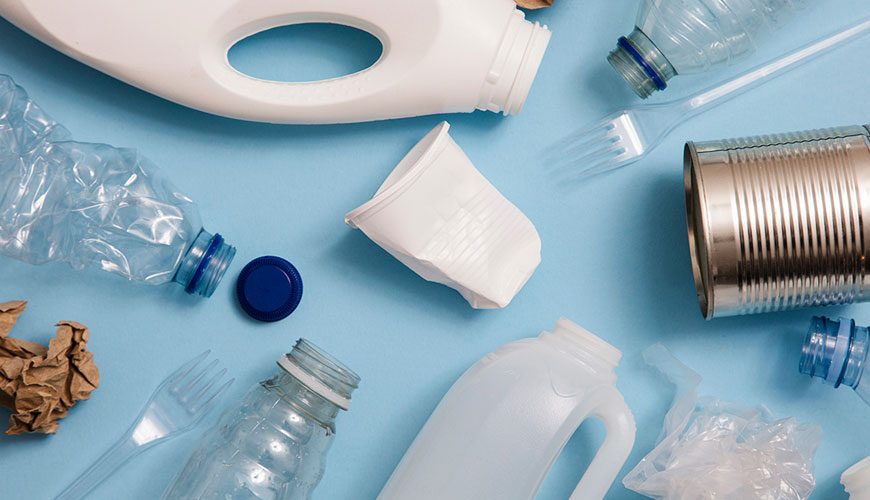

EUROLAB laboratory provides testing and compliance services within the scope of DIN 16995 standard. The DIN 16995 standard was developed in the working committee of Flexible packaging laminates, foils, sacks, bags, carrier bags, DIN standards committee for packaging (NAVp). Attention is drawn to the possibility that some elements of this document may be subject to patent rights.

Features and tests of plastic films:
Resistance to heat treatment is very important in plastics. Generally, thermoplastics decompose under their own weight at temperatures as high as 65-120°C and in some species 260°C. Thermosets are harder and more resistant to heat treatments. Most of them can be exposed to the effect of temperature between 150-230C°. Some special types can withstand up to 260°C.
The common features of plastics are that they can be shaped at a certain temperature. Plastics, which are synthetic materials with large molecular structure; They have found a wide area of use in packaging due to their lightness, transparency, low gas and moisture permeability, being resistant to pests, not being damaged by chemical and atmospheric effects, and being hermetically sealed.
Plastics used in packaging can be grouped as films and containers. Films are more like bags, bags, bags, etc. While the containers are used as trays, jars, bottles, buckets, tubes, and cans, they are used.
There are different types of plastic packaging. Some of these types are PET (Polyethylenetetraphthalate), PVC (Polyvilchloride), PP (Polypropylene), PS (Polystyrene) and PE (Polyethylene).
Polyethylene (PE): It is the type of plastic we use most in our homes. It has many uses such as bleach, detergent and shampoo bottles, motor oil bottles, garbage bags. Detergent bottles, trash cans and similar products can be made from recycled PE.
High Density Polyethylene (HDPE; 0,935-0,965 g/cm3): It is a very durable and economical material. It is naturally milky in appearance. Therefore, it is not used in products where clarity is important. It is one of the most used plastics. It has a wide range of uses because it is low cost, easy to shape and resistant to breakage. Plastic tubes, waste bags, bowls, cable insulation, buckets, thin carrier bags, milk, water, fruit juices, liquid detergents, motor oils, bleach, shampoos, perfume and lotion containers are made of HDPE.
Low Density Polyethylene (LDPE; 0,91-0,925 g/cm3): It is a material defined as a thermoplastic material made from the monomer ethylene. Polyethylene produced in 1933 by Imperial Chemical Industries (ICI) using this high-pressure process through free radical polymerization is described as the highest quality low-density polyethylene. This production uses the same method today. It has a wide consumption area as a cable in the industry.
This standard provides an overview of the properties and test methods of plastic films used in the packaging industry.
Among the services provided by our organization within the framework of material testing services, there are also DIN 16995 standard tests. Do not hesitate to contact our laboratory EUROLAB for your testing and certification requests.
To get an appointment, to get more detailed information or to request an evaluation, you can ask us to fill in our form and reach you.